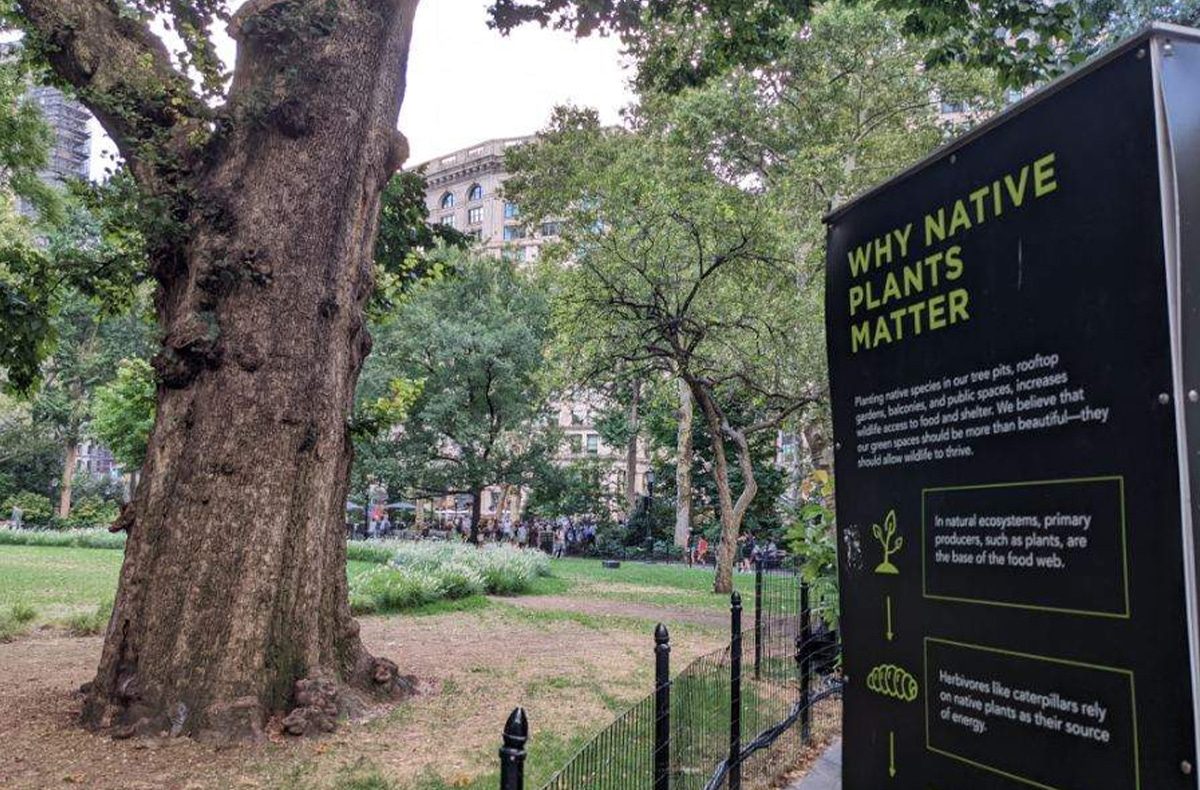
Nick Slater’s article on the American male’s obsession with perfectly manicured lawns struck home for me. I’m the kid of an immigrant father, who was immensely proud to be an American dad, but had his own unorthodox ways of doing so. (You can learn more about some of his dadly quirks—like when he insisted we finish building a life-size igloo out of snow one winter—here.)
As Nick covered, the perfectly manicured lawn is a time-honored icon of having reached the American Dream, and is inherently tied to traditional conceptions of masculinity within the country. The white picket fence isn’t realizing its full potential unless it’s wrapped around a gorgeous, verdant patch of land, which the Man of the House™ proudly maintains.
As Nick also explained, this comes at a steep cost—especially in today’s environment. Keeping up a green lawn requires an astonishing amount of water, and usually a whole lot of unnatural fertilizers that can wreak havoc on local ecosystems. Just anecdotally, my sister, a staunch environmentalist, has seen the fallout from these horticultural trophies firsthand at her Michigan lakehouse: the runoff from her neighbors’ lawns has caused the erstwhile crystal clear, pristine lake to be mired with algae blooms, fueled by all the fertilizer.
My sister’s disdain for her neighbors’ myopic choice to favor the health of their unnatural lawns over the health of their shared lake’s ecosystem is inherited. As much as my dad coveted the perfection of nearby lawns, he was not willing to pay the cost such beauty required—literally and metaphorically. As an East German immigrant, the man was exceptionally thrifty, so the idea of paying to sod the lawn was abhorrent to him. He was also ahead of his time in his ecological judginess—grass should grow naturally from the earth; transplanting a carpet of lawn was “cheating.”
Unfortunately, where we lived, grass didn’t want to grow readily, so my childhood is peppered with recollections of ongoing battles with patches of “slime” (no idea what that was, but it would not leave this one corner of our land) and frequent rental of lawn instruments for seeding and reseeding grass that only ever grew feebly at best. While he never gave up trying, on his own terms, Dad also never broke with his own moral code: if it doesn’t grow naturally from our land, then it’s not the lawn for us.
While this doesn’t seem too unreasonable a way of approaching gardening, it’s actually a vastly different mindset from the average American’s. Mainstream landscaping is all about aesthetics, and traditionally has taken absolutely no account for the natural requirements needed to support the growth of the selected flora.
Lawns are the most dominant example of this—and the most dominant example of lawns is the golf course. In the United States, golf courses consume 2.08 billion gallons of water per day. Even without the copious fertilizer that disrupts the natural surrounding ecosystems, the water cost of golf courses and their smaller cousin, the front lawn, is galling.
But most Americans, frankly, are selfish assholes. They only care about what impacts themselves, not how they impact others. So they want the fluffy bright green flawless lawn that ruins their neighbor’s lake, or the sprawling golf course smack in the middle of a desert to enjoy on their vacation.
The best way for us to move past this Selfish Asshole Model of lawn maintenance, is to shift the way we look at and appreciate our landscaping away from pure, decontextualized aesthetics and back to what actually jives with nature. There is a move towards this, both among everyday gardeners and in bigger institutions: in New York City’s Madison Square Park, there’s a campaign for “going native” where they are actively seeking to increase native plants “to benefit park wildlife.” As their site explains, while non-native plants may be beautiful, they “are of little use to most wildlife and create ecological wastelands.” Again: there is always a cost to the choices we make. The more of us who wake up to these consequences and start seeing green lawns of non-native grass as the emblems of waste that they are, the faster we will move towards a better version of American landscaping.
I appreciated Nick’s assessment: that a new conception of what the American lawn could be is tied to a new conception of what American masculinity could be. I feel like my thrifty immigrant Dad offered a template for that. While he appreciated the aesthetics of a green lawn, he never forgot the cost. It’s a lesson we should all take to heart, regardless of gender or nationality.
For those of us lucky enough to have a plot of land we can tend, we should look at our gardens not as just decorative plant-based canvases, but the natural, vital parts of our environment they are, which we have the honor and responsibility to care for. When it comes to making ecologically responsible choices, the grass isn’t always going to be greener, but at least it will be growing from a strong moral ground.



